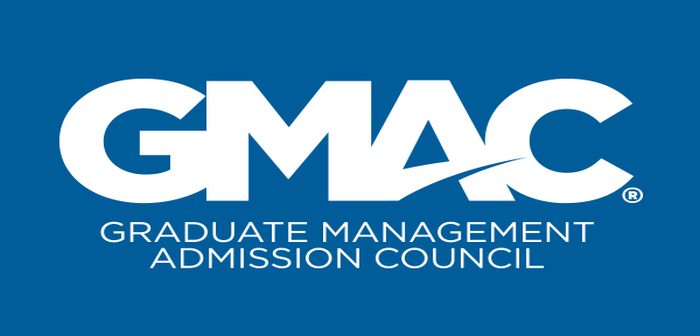The Graduate Management Council (GMAC) is not only involved in organising the Graduate Management Admission Test (GMAT) but also conducts research and surveys for a deeper understanding of the ever-changing market requirements and career goals of those opting for management studies. Sangeet Chowfla, GMAC president and CEO has written about the changes in the MBA program in recent years and its continuing relevance.
The global demand is up for the MBA and reports of the demise of the two-year full-time MBA are “greatly exaggerated,” says Chowfla in an article in BizEd, the bi-monthly magazine published by AACSB.
“We survey potential GME (graduate management education) candidates, current students, alumni, and corporate recruiters to compile global statistics on who is pursuing management education and why. Our most recent numbers tell us that management education is both more popular and more fragmented than ever before.
“We assess that every year up to two million people enter the GME market, defined as postgraduate programs in management, business, commerce, or administration. Currently, candidates can apply to more than 16,500 programs and institutions,” he says.
The business degrees that students pursue vary depending on their own career life stages, the situation in the globalized economy and the changes in the business cycle. “The MBA remains the most sought-after graduate management degree, but it no longer represents the only path to success. GME is no longer “one-size-fits-all,” he adds.
Chowfla points to three key factors, the first being the rising global demand for the MBA. While the reports about
declining application volumes in the U.S. and some schools discontinuing their MBA programs are true, the interpretation by some people that the traditional MBA (mostly 2-year programs in the U.S.) was on the way out to be replaced by shorter programs that produce job-ready graduates, would not be correct.
Globally, demand for the MBA is as strong as ever. A 2017 GMAC survey of 329 MBA programs showed that aggregate application volumes increased by 6% over the previous year. A separate study of alumni taken in 2017 showed that eight out of ten graduates rated their MBAs as excellent or outstanding.
Furthermore, Net Promoter Scores—which subtract the number of “detractors” from the number of “promoters” of any product or service—were in the 50-point range for MBA programs. On both measures, U.S. schools led their European and Asian counterparts, Chowfla says.
“There is a significant correlation between large class size and high rankings, and we conclude that students are signalling the importance they place on brand value. These larger, more recognized programs accounted for two-thirds of the total application volume in our sample,”
However, in 2017, applications to U.S. schools, constituting 44% of the total application volume, declined by 1.4%. The applications to schools with class sizes under 200 also declined by 11%. The survey found that these decreases were almost exclusively driven by the choices of international students and an interplay of increased availability of quality education and jobs in other regions. While in 2000, no Asian programs were ranked in the Financial Times top 40, eight got ranked last year.
Negative perceptions about the U.S. as a study destination since the advent of Donald Trump as President, four in ten potential students have reconsidered pursuing degrees in the U.S. Recently launched programs in countries such as Germany, Spain, Singapore, and Japan are providing candidates with broader opportunities.
“Our application trends research shows that MBA application volumes grew by 3% in Europe, 6% in Canada and 13% in Asia,” Chowfla says.
In the meantime, international management programs have been expanding. In 2015, Saïd Business School at the University of Oxford in the U.K. increased its cohort of full-time MBA students by just over 40%. Within the past two years, Cambridge Judge Business School in the U.K. has increased its class size by 30%. In 2017, the Indian School of Business in Hyderabad admitted its largest class. Fudan University in Shanghai is building a new campus to accommodate 400 new MBA students within the next two years.
The second factor, according to Chowfla, is that the demand for full-time programs is reverting to its selective roots.
“Driven by brand, size, and rank, demand for MBA programs in the U.S. is showing great variation by the institution. While overall application volume for full-time two-year MBA programs in the U.S. declined last year, applications to large programs with 200 students or more grew by 4 % on the back of stronger domestic demand.
“There is a significant correlation between large class size and high rankings, and we conclude that students are signalling the importance they place on brand value. These larger, more recognized programs accounted for two-thirds of the total application volume in our sample,” Chowfla says.
As the third factor, Chowfla points out that pre-experience Master’s degrees are not substitutes for MBAs. An MS in management, or an MA in business, help launch a career, while an MBA is designed to accelerate a career. GMAC research shows that MiM candidates are distinctly younger and have less work experience by an average of 3.5 years. They also start out at lower places in the corporate hierarchy—55% of them are in entry-level positions, while only 13% of MBA candidates hold such jobs.
ALSO READ: IIMA Hikes PGP Fee to Rs 22 Lakh, PGPX fee Also Up By 5%
The difference is also seen in long-term earnings. Over a period of 20 years, European MiM graduates earn less than their MBA counterparts by a cumulative €1.1 million (US$1.28 million)—a difference of 48%. The gap is only 26% in the U.S., where master’s degree programs tend to attract older, more experienced candidates.
“Our survey data shows that program satisfaction is also much lower for MiM graduates, only half of whom rate their experiences as excellent or outstanding. It’s also worth noting that nearly 20 percent of MiM graduates indicate an interest in going back to school at a later date. Globally, one in five candidates for graduate business programs holds a prior master’s degree,” Chowfla says.
Interestingly, the demand for MiM programs may decline in the future, especially in Europe as Chinese students who form a large part of the applicants are now able to choose schools closer to home. “Between 2016 and 2017, applications to the same 160 master’s programs that we surveyed had declined by 8%, largely due to softer demand from Chinese students,” he adds.
“Schools around the world must continue to evolve. They must meet needs that are both global and local, must launch careers and accelerate them, and must adapt to the life stages of the individual. The MBA remains the appropriate choice for many, but may not be the right format for everyone.
“At GMAC, we are undertaking research that will help us understand candidates from a longitudinal perspective so that we can speak to them wherever they are in their career journeys. If one size no longer fits all, it behoves those of us in management education to segment offerings by candidates’ life stages, defines market positions, differentiates ourselves from the competition, and deliver value. After all, we teach our students to do the same,” Chowfla says.




